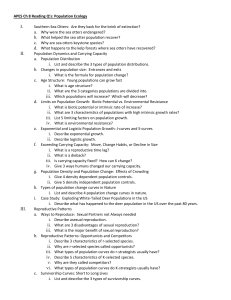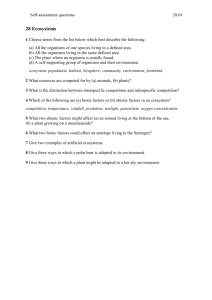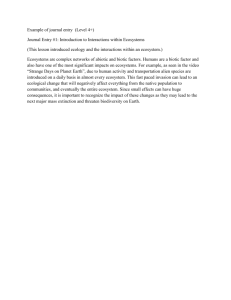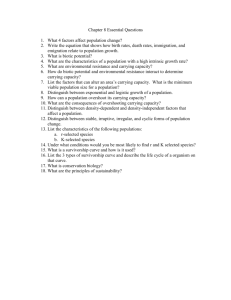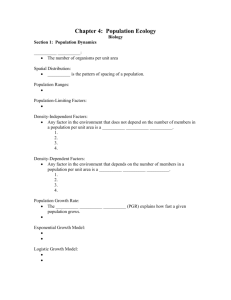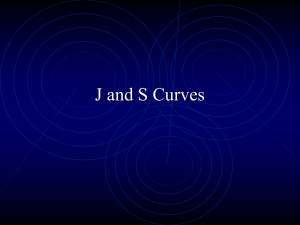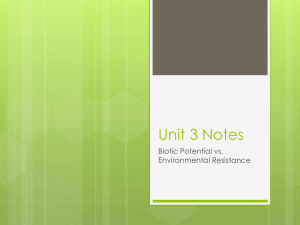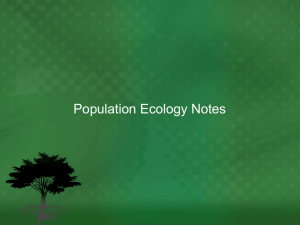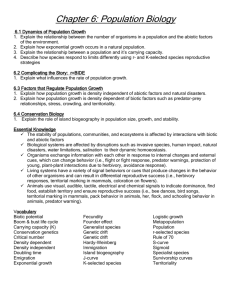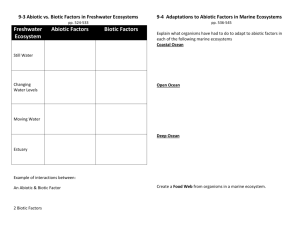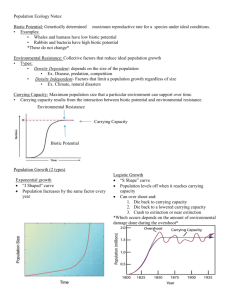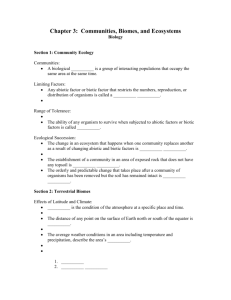Population Dynamics, Carrying Capacity and Conservation Biology
advertisement
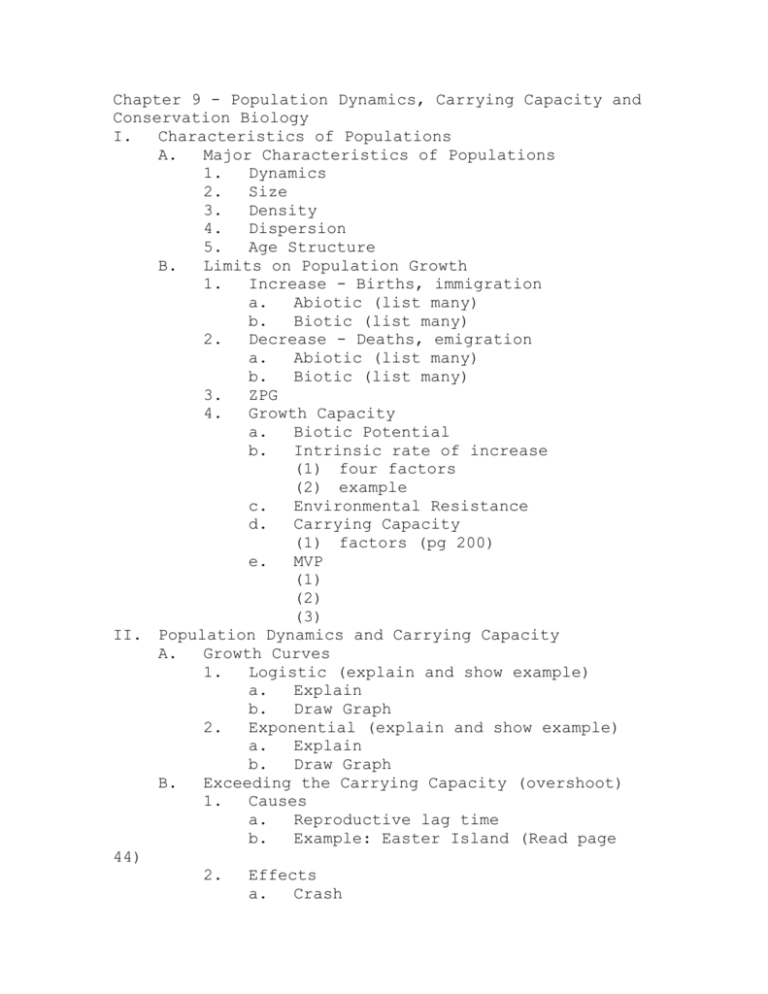
Chapter 9 - Population Dynamics, Carrying Capacity and Conservation Biology I. Characteristics of Populations A. Major Characteristics of Populations 1. Dynamics 2. Size 3. Density 4. Dispersion 5. Age Structure B. Limits on Population Growth 1. Increase - Births, immigration a. Abiotic (list many) b. Biotic (list many) 2. Decrease - Deaths, emigration a. Abiotic (list many) b. Biotic (list many) 3. ZPG 4. Growth Capacity a. Biotic Potential b. Intrinsic rate of increase (1) four factors (2) example c. Environmental Resistance d. Carrying Capacity (1) factors (pg 200) e. MVP (1) (2) (3) II. Population Dynamics and Carrying Capacity A. Growth Curves 1. Logistic (explain and show example) a. Explain b. Draw Graph 2. Exponential (explain and show example) a. Explain b. Draw Graph B. Exceeding the Carrying Capacity (overshoot) 1. Causes a. Reproductive lag time b. Example: Easter Island (Read page 44) 2. Effects a. Crash C. Growth b. Example: Sheep Population Density Affects on Population 1. Density Independent Factors a. List several with EXAMPLES 2. Density Dependent Factors a. List several with EXAMPLES D. Population Change Curves in Nature Explain and describe conditions of each with example 1. Stable 2. irruptive 3. Irregular 4. Cyclic 5. Draw graph E. Population Control Describe and give conditions and example of each 1. Top Down control 2. Bottom Up control 3. Debate? III. Reproductive Strategies and Survival A. Reproductive options 1. Asexual a. How? b. Pros and Cons (THINK) c. Examples 2. Sexual a. How? b. Pros and Cons (THINK) c. Examples B. r-Strategist Species 1. Fully describe all characteristics 2. Examples C. K-Strategists Species 1. Fully describe all characteristics 2. Examples D. Survivorship Curves 1. Life expectancy 2. Survivorship curves Describe and give examples of each a. Late loss b. Early loss c. Constant loss 3. Life Table IV. Conservation Biology A. Conservation Biology 1. What? 2. Who? 3. Underlying Principles a. b. c. 4. Focus a. Endangered species b. Wildlife reserves c. Ecological restoration d. Environmental ethics 5. Wildlife Management B. Extinction Prevention 1. Three Questions C. Bioinformatics V. Human Impact on Ecosystems: Learning from Nature A. Human Modified Natural Ecosystems 1. Explain what we have done IN DETAIL B. Figure 9-12 C. Living Sustainably 1. List and explain al 6 features D. Ecological Surprises (pg 208) VI. Solutions: Working with Nature to Help Ecosystems Heal A. Solutions (blue box pg 209)
